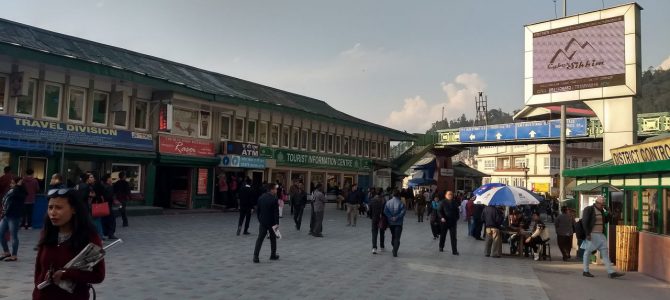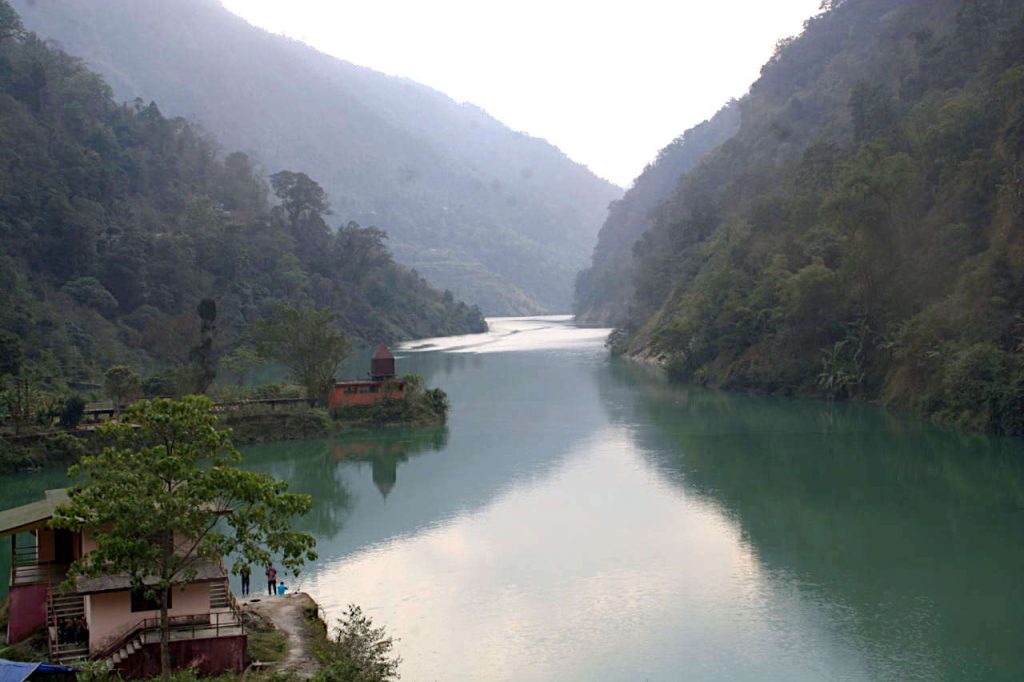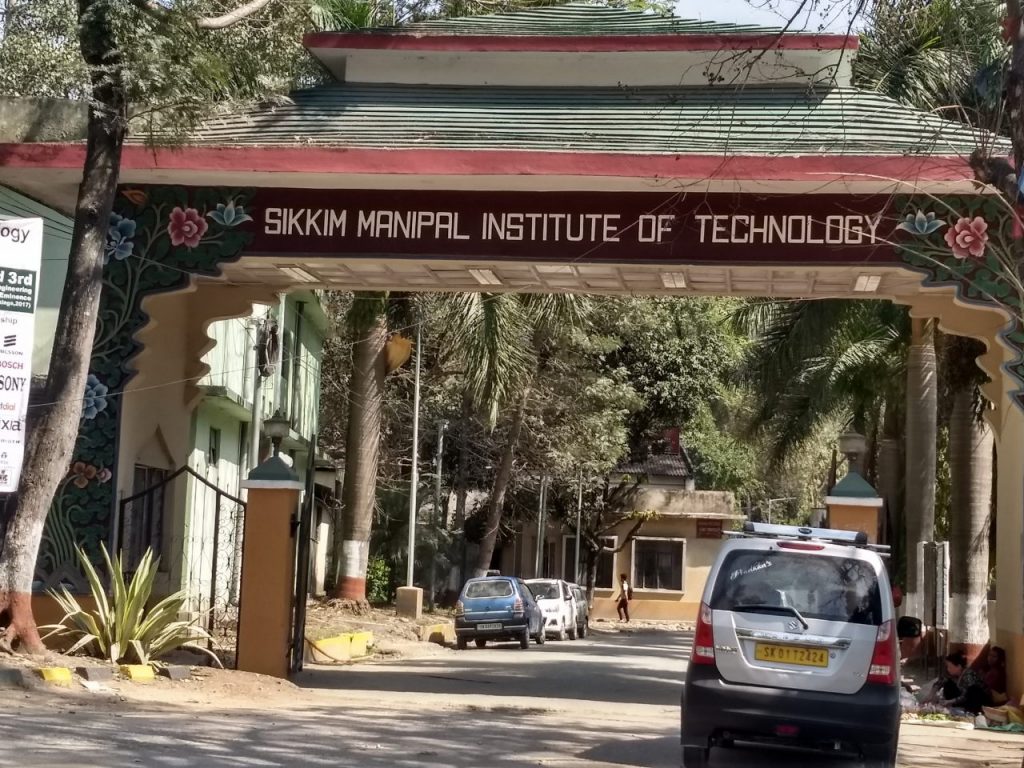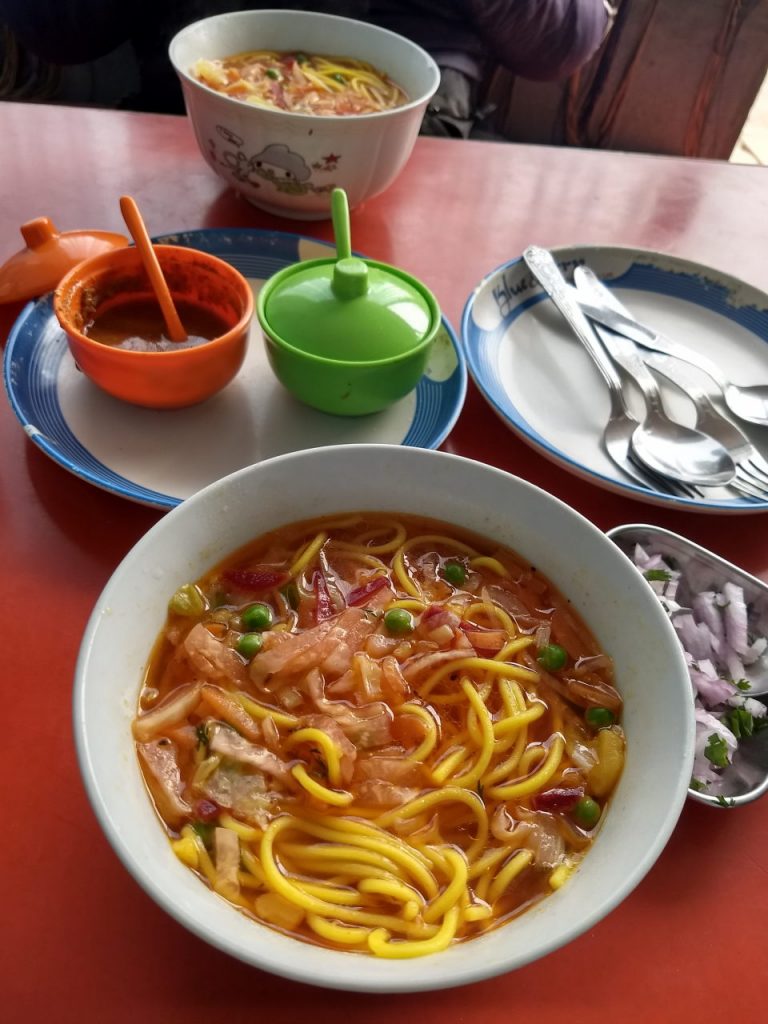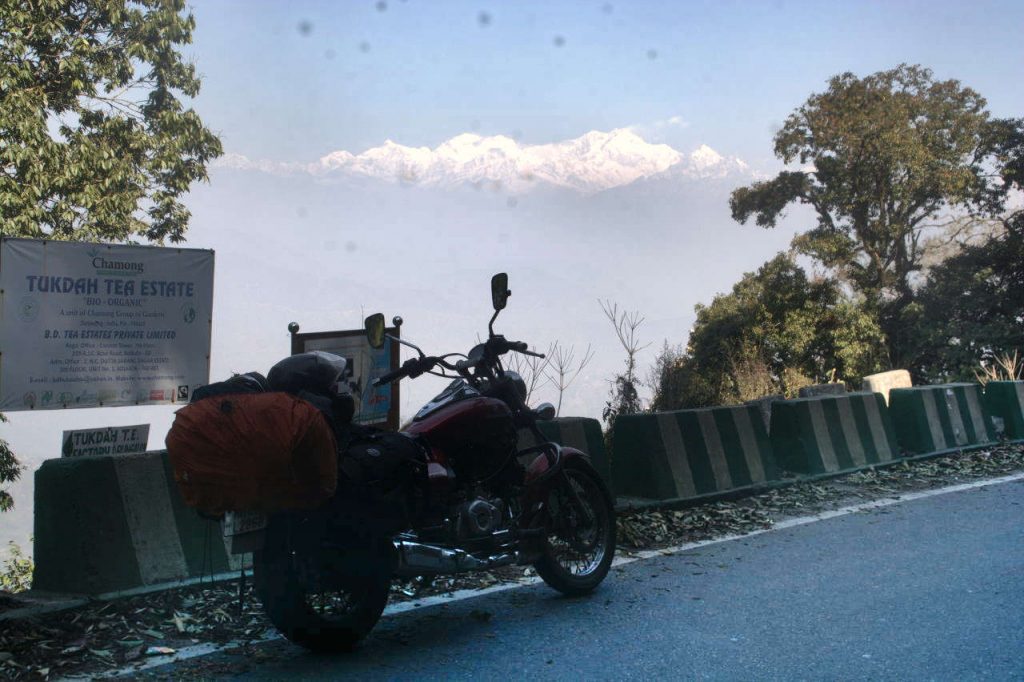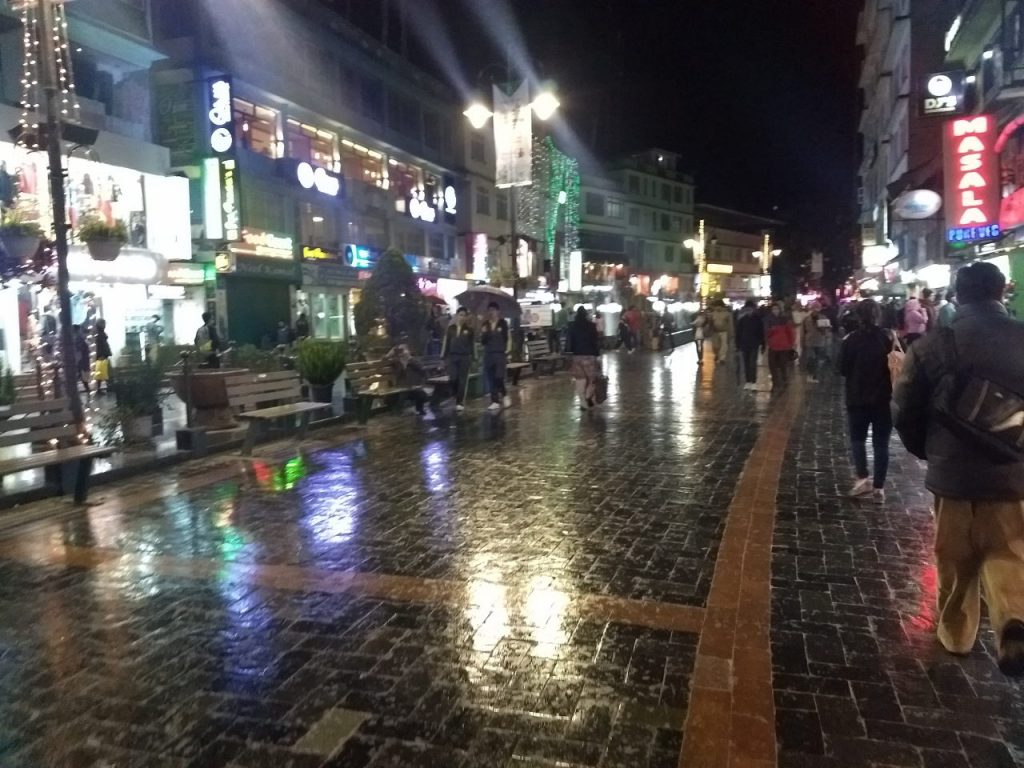Name a capital city in India with moderately pleasant temperatures throughout the year, 100% organic food, leisurely walk in a pedestrian only market in the center of the city with breathtaking views of the Himalayan mountains that form the border of four countries: India, China, Nepal and Bhutan. The one and only answer for this question is Gangtok, the capital of Sikkim.
Geography of Gangtok
Gangtok is in South Sikkim district and is located on a mountain that adjoins the valley of Teesta river, which seperates Sikkim from West Bengal. Sikkim and Gangtok have several interesting facts. Tok in Nepali and in several Indian languages such as Hindi means a peak. In that sense, Gangtok probably refers to a city on a peak with a view. A very apt name for its location.
People of Gangtok
Sikkim and Gangtok have people from two different faiths. The majority are Shiva-worshipping Hindus with their chief deity being Pashupati Nath (the Lord of animal kingdom / fauna). Their most important temple is actually not in India, but in Nepal. Because of immigration and influence from the fleeing Tibetans, Sikkim also has a sizeable population of Buddhists.
The main occupation of the Sikkimese is cultivation of spices such as cardamom. Other occupations include animal rearing (mainly yak and sheep) and transportation. Tourism is a huge occupation category in Sikkim and several locals have set up tour operations, taxis, permit facilitation, hotels and restaurants. Some communities such as Sherpas and Gorkhas have dedicated occupations held in high regard by their families, such as mountaineering, luggage portering for mountaineers and joining the army.
Most of the communities in Sikkim are Nepali-speaking. Nepali is also the official language of the state government. It uses the Devnagari script, so most Sikkimese are very comfortable with Hindi, although with their own ‘cute’ accent. English is also widely spoken due to the spread of tourism and also because of education in premier boarding schools around Gangtok. There are several major communities in Sikkim, such as Bhutia, Sherpa, Gorkha and Lepcha.
Significance of Gangtok
These days, Gangtok is very famous for its higher education. Many famous universities have graduation and post graduation programs here. The road between Ranipool to Gangtok, especially the township of Tadong, has several major university campuses, e.g., Sikkim Manipal, ICFAI, SRM etc. People from different parts of the country come here to pursue their higher studies in various fields.
Where to shop?
The centre point of the city is the Mahatma Gandhi Marg popularly called the MG Marg. It is a pedestrian only market place that has a variety of shops from tour operators and trekking organizers to local eateries and even government organisations. There are numerous sky walks that connect all parts of the town centre and makes it safe for pedestrians to walk around in the city.
The many small shops in MG marg have duty-free smuggled goods from across the China border that are of good quality and cheap prices making it a great place to shop for winter clothes.
What to Eat?
Sikkim has mostly small scale and cottage industries including country liquor. Bollywood actor Danny Denzongpa owns Yuksom Breweries near Rangpo town. This brewery is the 3rd largest brewery in the country. The local population gives good patronage to the home brewed recipes. As in many Himalayan regions, the most famous food is momo, a steamed dumpling and thukpa, a soupy noodle.
Sikkim had recently declared itself as an 100% organic state. So you can be sure that any meal that you have in any restaurant there is an organic one.
What to See?
View points or Toks
There are numerous view points around the city such as Ganesh Tok, Hanuman Tok and Tashi View point. Each provides a beautiful view of Gangtok and the greater Himalayan range from different angles. Ganesh Tok gives a birds eye view of the city. Each of these view points are a few km’s from the main city. One can travel by their own vehicle or a hired taxi to these places.
Monasteries
Gangtok has several well maintained and historic monasteries around the city. Rumtek monastery is about 23 Km from the city on the road to Nathula pass. There are also ones that are closer to the city like Gonjang Monastery near Tashi View point. The monasteries have beautiful wall painting and scroll paintings in the main hall and the architecture is distinct.
Nathu La Pass
Nathu La Pass is only 6 km from the china border and hence it is a restricted area. Indian nationals can visit with permits from local tourism offices that may be applied by local guides. The pass is situated at over 16000 ft in a snow filled and difficult to reach territory and is reachable only during certain times of the year subject to road conditions. The view is well worth it. One can see Chinese soldiers across the fence from the Indian side. The local urban legend is that Chinese soldiers gives drugged smokes to Indians and are warned not to accept anything from them. Urban legends of Yeti, the abominable snowman thrive around this area. So look out for foot prints in the snow. 😀
On the same route as Nathu La are two more features. The first landmark on the way is Changu Lake, also known as Tsomgo lake. It is fresh water lake which freezes over during the winter. The second landmark is a temple dedicated to martyrs of Indo-China war.
Gurudongmar Lake
Gurudongmar Lake is on the route that takes you through Lachung and Lachen. This pass is even higher up at an altitude of 17800 ft. It has one of the highest lakes in the world. This lake is holy to the Buddhists, Sikhs and Hindus. Guru Padmasambhava, also known as Guru Rinpoche or Guru Dongmar, founder of Tibetan Buddhism is said to have visited the lake during 8th century. Guru Padmasambhava is also considered as an incarnation of Lord Vishnu. Shri Guru Nanak is considered to have visited this lake on his way back from Tibet in the 15th century. Both the folklores suggest that their respective Guru blessed the lake and made a part of it to never freeze to allow for it be a source of drinking water for the local people throughout the year. There is a Sarva Dharma Sthal near the lake which signifies the importance of the lake to various religions. A over night stay at Lachen is recommended to break the long journey as well as acclimatize.
MG Road
A leisurely walk on MG road, admiring the breathtaking landscapes and enjoying the local food is one of the things every one must do.
Permits Required
Indian Citizens have to take permits from the tourist office in MG Road. If you are travelling with a local taxi, make your booking at least one day prior so that they arrange the permits for you. Self-driven cars are not allowed in this region beyond a point. Only Sikkim-registered taxis are permitted. People on two wheelers may proceed with their own permits processed directly. Aadhar is not considered as a proof of citizenship, only of residency. Hence voting ID or passport is required to apply for the permission. It is important to have all your vehicle documents covering the dates for the vehicle you will be taking there (applicable only for bikes). There is very little information available online on this and the information changes frequently. The office also works on timings for receipt of documents and issue of permits. So allow one or two day leisure time in the city if you have to process your permits yourself.
Foreign Nationals are not allowed to visit Nathula pass. A permission may be required from the ministry of Home Affairs in Delhi if required and cannot be granted by local authorities.
Suggested tourist circuit (either with your own vehicle or by taxi): NJP/Siliguri – Teesta – Gangtok – Lachen – Gurudongmar – Gangtok – Nathu La – Gangtok – Kalimpong – Darjeeling – Ghoom – Pasupati – Mirik – Siliguri/NJP
Tips to remember
As Gangtok only permits SK01, i.e Gangtok registered tourist taxis to ply, it is better to do prior booking. Published rates for cab for fixed destination trips are available. Ask for the tarriff sheet before you book.
As these restrictive practices have severely affected tourist taxi business in Darjeeling, they have also resorted to controlling taxis coming from Sikkim. This has been a point of contention with the local taxi drivers and have often left the tourists caught cold between these arrangements.
Both hill towns are severely dependent on the tourists for their bread and butter, so you may expect a lot of these information to change dynamically. So unless you are planning a self-driven trip , go with a person who understands the local dynamics and can handle them well.
Conclusion
Gangtok is the easiest-to-access city in all of north-east India and the transport options have never been better than now. Gangtok is also a fast-expanding city with plenty of options for tourists. Roads around Gangtok are being ramped up by the Indian Army and soon the driving experience will be better. If you haven’t visited Gangtok yet, plan your trip this year.

